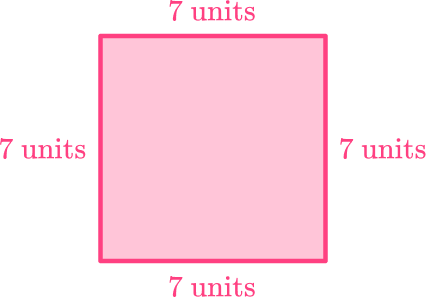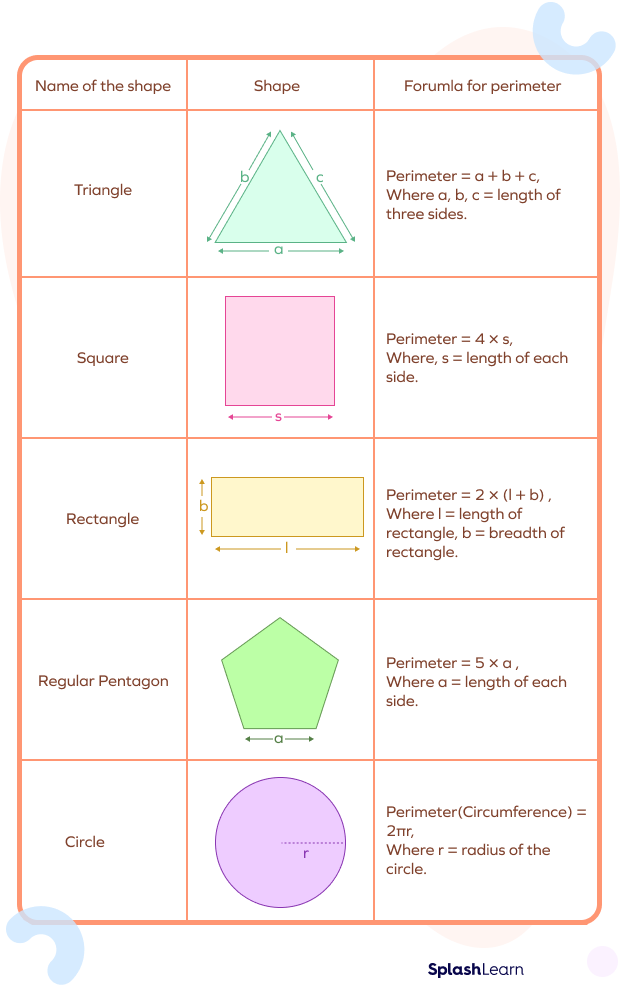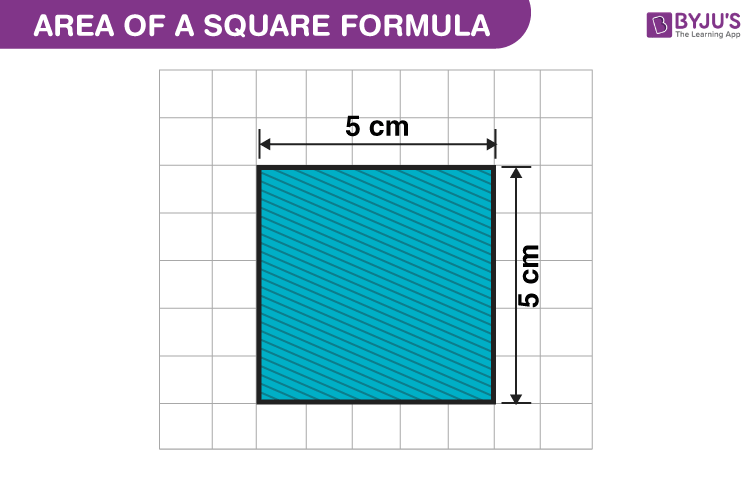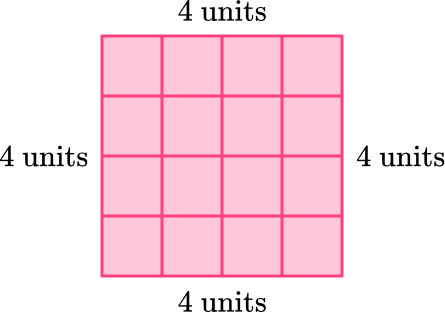Topic example of perimeter: Discover comprehensive examples of perimeter calculations and their real-life applications. Learn the formulas for different shapes such as rectangles, squares, triangles, and circles, and understand common mistakes to avoid. This guide will help you master the concept of perimeter with practical examples and practice problems to enhance your understanding.
Table of Content
- Examples of Perimeter
- Introduction to Perimeter
- Definition of Perimeter
- Formulas for Calculating Perimeter
- Examples of Perimeter Calculations
- Real-Life Applications of Perimeter
- Common Mistakes in Perimeter Calculations
- Practice Problems
- Conclusion
- YOUTUBE: Hãy xem video này để tìm hiểu cách tính diện tích và chu vi của một hình hợp thành, đồng thời áp dụng vào ví dụ về hình L. Thầy J sẽ hướng dẫn bạn cách thức thực hiện tính toán một cách dễ dàng và nhanh chóng.
Examples of Perimeter
The perimeter of a shape is the total length of its sides. Here are some examples of how to calculate the perimeter for various shapes:
1. Rectangle
To find the perimeter of a rectangle, use the formula:
\( P = 2(l + w) \)
- Example: If the length \( l \) is 7 units and the width \( w \) is 5 units, then the perimeter \( P \) is:
\( P = 2(7 + 5) = 2 \times 12 = 24 \) units
2. Square
The perimeter of a square is given by:
\( P = 4a \)
- Example: If the side length \( a \) is 6 units, then the perimeter \( P \) is:
\( P = 4 \times 6 = 24 \) units
3. Triangle
The perimeter of a triangle is the sum of the lengths of its sides:
\( P = a + b + c \)
- Example: For a triangle with side lengths \( a = 3 \) units, \( b = 4 \) units, and \( c = 5 \) units, the perimeter \( P \) is:
\( P = 3 + 4 + 5 = 12 \) units
4. Circle
The perimeter of a circle is also known as the circumference. It is given by:
\( C = 2\pi r \)
- Example: If the radius \( r \) is 7 units, then the circumference \( C \) is:
\( C = 2\pi \times 7 = 14\pi \approx 43.98 \) units
5. Regular Pentagon
The perimeter of a regular pentagon (all sides are equal) is:
\( P = 5a \)
- Example: If each side \( a \) is 4 units, then the perimeter \( P \) is:
\( P = 5 \times 4 = 20 \) units
Perimeter Formulas Summary
| Shape | Formula |
| Rectangle | \( P = 2(l + w) \) |
| Square | \( P = 4a \) |
| Triangle | \( P = a + b + c \) |
| Circle | \( C = 2\pi r \) |
| Pentagon | \( P = 5a \) |

READ MORE:
Introduction to Perimeter
The perimeter of a geometric shape is the total length of its boundary. It is a fundamental concept in geometry, essential for understanding the dimensions and measurements of various shapes. Here, we will explore the concept of perimeter, its calculation methods for different shapes, and its practical applications.
Definition:
Perimeter is defined as the total distance around the edge of a two-dimensional shape. It can be calculated by summing the lengths of all the sides of the shape.
Formulas for Common Shapes:
- Rectangle: \( P = 2(l + w) \) where \( l \) is the length and \( w \) is the width.
- Square: \( P = 4a \) where \( a \) is the length of a side.
- Triangle: \( P = a + b + c \) where \( a \), \( b \), and \( c \) are the lengths of the sides.
- Circle (Circumference): \( C = 2\pi r \) where \( r \) is the radius.
Steps to Calculate Perimeter:
- Identify the shape for which you need to calculate the perimeter.
- Measure or obtain the lengths of all the sides of the shape.
- Apply the appropriate formula for the shape.
- Sum the lengths of all the sides (or use the formula) to find the perimeter.
Example Calculations:
| Shape | Formula | Example Calculation |
| Rectangle | \( P = 2(l + w) \) | If \( l = 5 \) units and \( w = 3 \) units, \( P = 2(5 + 3) = 2 \times 8 = 16 \) units |
| Square | \( P = 4a \) | If \( a = 4 \) units, \( P = 4 \times 4 = 16 \) units |
| Triangle | \( P = a + b + c \) | If \( a = 3 \) units, \( b = 4 \) units, and \( c = 5 \) units, \( P = 3 + 4 + 5 = 12 \) units |
| Circle | \( C = 2\pi r \) | If \( r = 7 \) units, \( C = 2\pi \times 7 \approx 44 \) units |
Understanding the perimeter is crucial for various real-life applications, such as fencing a yard, framing a picture, or any project requiring precise boundary measurements.
Definition of Perimeter
The perimeter of a shape is the total length of its boundary. It represents the distance around a two-dimensional shape. Perimeter is applicable to various shapes such as rectangles, squares, triangles, and circles. Each shape has a specific formula to calculate its perimeter based on its dimensions.
Below are the formulas for calculating the perimeter of common shapes:
- Square: The perimeter is calculated as \( P = 4a \), where \( a \) is the length of one side.
- Rectangle: The perimeter is given by \( P = 2(l + b) \), where \( l \) is the length and \( b \) is the breadth.
- Triangle: The perimeter is the sum of all its sides, \( P = a + b + c \), where \( a \), \( b \), and \( c \) are the lengths of the sides.
- Circle: The perimeter, also known as the circumference, is \( P = 2\pi r \), where \( r \) is the radius of the circle.
Understanding perimeter is useful in various real-life applications such as determining the amount of fencing required to enclose a garden, the length of trim needed to border a room, or the ribbon needed to wrap a gift.
Formulas for Calculating Perimeter
The perimeter of a shape is the total length around its boundary. Different shapes have distinct formulas to calculate their perimeter. Below are the formulas for various common shapes:
- Square: The perimeter of a square is calculated by adding all four equal sides together.
- Formula: \( P = 4a \) where \( a \) is the side length.
- Rectangle: The perimeter of a rectangle is the sum of all four sides, with opposite sides being equal.
- Formula: \( P = 2(l + w) \) where \( l \) is the length and \( w \) is the width.
- Triangle: The perimeter of a triangle is the sum of the lengths of its three sides.
- Formula: \( P = a + b + c \) where \( a, b, \) and \( c \) are the side lengths.
- Circle: The perimeter of a circle, known as the circumference, is calculated using the radius.
- Formula: \( P = 2\pi r \) where \( r \) is the radius.
- Parallelogram: The perimeter of a parallelogram is the sum of the lengths of its sides.
- Formula: \( P = 2(a + b) \) where \( a \) and \( b \) are the lengths of adjacent sides.
- Polygon: The perimeter of any polygon is the sum of the lengths of all its sides.
- Formula: \( P = \sum \text{side lengths} \).
To calculate the perimeter of irregular shapes, you can use a string or thread to trace the boundary and then measure the length of the string. The total length of the string gives the perimeter.
| Shape | Formula |
|---|---|
| Square | \( P = 4a \) |
| Rectangle | \( P = 2(l + w) \) |
| Triangle | \( P = a + b + c \) |
| Circle | \( P = 2\pi r \) |
| Parallelogram | \( P = 2(a + b) \) |
| Polygon | \( P = \sum \text{side lengths} \) |
Examples of Perimeter Calculations
Understanding how to calculate the perimeter of various shapes is essential in geometry. Below are detailed examples of how to find the perimeter for different geometric shapes:
-
Square
For a square with side length \(a\), the perimeter \(P\) is calculated as:
\[ P = 4a \]Example: If each side of a square is 5 cm, then the perimeter is:
\[ P = 4 \times 5 = 20 \text{ cm} \] -
Rectangle
For a rectangle with length \(L\) and width \(W\), the perimeter \(P\) is:
\[ P = 2(L + W) \]Example: If a rectangle has a length of 8 cm and a width of 3 cm, then the perimeter is:
\[ P = 2(8 + 3) = 2 \times 11 = 22 \text{ cm} \] -
Triangle
For a triangle with sides \(a\), \(b\), and \(c\), the perimeter \(P\) is:
\[ P = a + b + c \]Example: If the sides of a triangle are 6 cm, 7 cm, and 8 cm, then the perimeter is:
\[ P = 6 + 7 + 8 = 21 \text{ cm} \] -
Circle
For a circle with radius \(r\), the perimeter (circumference) \(C\) is given by:
\[ C = 2\pi r \]Example: If the radius of a circle is 4 cm, then the perimeter is:
\[ C = 2 \pi \times 4 = 8\pi \approx 25.12 \text{ cm} \] -
Parallelogram
For a parallelogram with adjacent sides \(a\) and \(b\), the perimeter \(P\) is:
\[ P = 2(a + b) \]Example: If the sides of a parallelogram are 5 cm and 10 cm, then the perimeter is:
\[ P = 2(5 + 10) = 2 \times 15 = 30 \text{ cm} \] -
Irregular Polygon
For an irregular polygon, the perimeter is the sum of the lengths of all its sides.
Example: If the sides of an irregular pentagon are 3 cm, 4 cm, 5 cm, 6 cm, and 7 cm, then the perimeter is:
\[ P = 3 + 4 + 5 + 6 + 7 = 25 \text{ cm} \]

Real-Life Applications of Perimeter
Understanding the concept of perimeter is crucial in various real-life situations. Here are some practical applications:
- Fencing a Yard: To determine the amount of fencing material needed, you calculate the perimeter of the yard. For a rectangular yard, you use the formula \(2 \times (\text{length} + \text{width})\).
- Building Borders: When laying out a garden, flowerbed, or swimming pool, the perimeter helps in estimating the boundary materials such as bricks or stones required.
- Interior Design: Perimeter calculations are used in measuring the lengths of wallpaper or borders for a room. For instance, to place a decorative border around a room, you need to know the total perimeter.
- Sports Fields: In designing sports fields like basketball courts or soccer fields, calculating the perimeter ensures the correct placement of boundary lines and seating arrangements.
- Construction: When planning the layout of a building, the perimeter measurements guide the foundation and outer wall placements, ensuring stability and proper design.
- Roads and Pavements: Urban planning often involves calculating the perimeter of roads and pavements to determine the amount of materials like asphalt or concrete required for construction.
- Fabrication: In manufacturing, knowing the perimeter of various components ensures precise cutting and fitting of materials, reducing waste and improving efficiency.
These applications demonstrate the importance of perimeter in daily life, highlighting its utility in various fields from construction to gardening, and ensuring efficient use of resources.
Common Mistakes in Perimeter Calculations
Calculating the perimeter of geometric shapes can be straightforward, but common mistakes can lead to incorrect results. Here are some typical errors and tips on how to avoid them:
- Forgetting to Add All Sides: Ensure that you account for each side of the shape. For example, a common mistake is to double count one side or miss a side entirely, especially in irregular polygons.
- Incorrect Units: Always use consistent units when measuring the sides. If some sides are in different units, convert them to a common unit before adding.
- Misidentifying Shapes: Make sure you correctly identify the shape you are working with, as different shapes have different perimeter formulas. For example, a rectangle has opposite sides equal, whereas a parallelogram has opposite sides equal but angles can differ.
- Using the Wrong Formula: Different shapes require different perimeter formulas. For instance:
- Rectangle: \(P = 2(L + W)\)
- Triangle: \(P = a + b + c\)
- Circle (Circumference): \(P = 2\pi r\)
- Square: \(P = 4a\)
- Arithmetic Errors: Simple addition mistakes can alter the final result. Double-check your arithmetic, especially when dealing with decimals or fractions.
- Omitting Parts of Composite Shapes: When dealing with composite shapes (shapes made up of multiple simple shapes), ensure you add all relevant sides together. For example, in a figure made of a rectangle and a semicircle, calculate the perimeter of both parts and add them together.
- Incorrectly Handling Curved Shapes: For shapes involving curves like circles, ensure you use the correct formula for circumference and not a straight-line perimeter formula.
By being mindful of these common mistakes and following a step-by-step approach, you can improve accuracy in your perimeter calculations.
Practice Problems
Here are some practice problems to help reinforce your understanding of perimeter:
-
Calculate the perimeter of a rectangle with length 5 cm and width 3 cm.
-
Find the perimeter of a square with each side measuring 8 meters.
-
Determine the perimeter of an equilateral triangle with side length 10 inches.
-
Compute the circumference of a circle with radius 6 centimeters.
-
Find the perimeter of a regular pentagon with side length 7 meters.
Conclusion
In conclusion, understanding perimeter is essential in various mathematical and real-life contexts. By grasping the concept of perimeter and familiarizing yourself with its calculation methods, you can efficiently determine the total length of the boundary of any given shape. Whether it's calculating the perimeter of basic geometric shapes like rectangles, squares, triangles, circles, or more complex polygons, the principles remain the same. Additionally, recognizing common mistakes in perimeter calculations can help avoid errors and ensure accurate results. By practicing perimeter problems regularly, you can reinforce your skills and gain confidence in applying perimeter concepts to solve practical problems.

Hãy xem video này để tìm hiểu cách tính diện tích và chu vi của một hình hợp thành, đồng thời áp dụng vào ví dụ về hình L. Thầy J sẽ hướng dẫn bạn cách thức thực hiện tính toán một cách dễ dàng và nhanh chóng.
Tìm Diện Tích và Chu Vi của Hình Hợp thành | Ví dụ về Hình L | Toán học với Thầy J
READ MORE:
Hãy xem video này để trẻ em học về khái niệm chu vi trong toán học. Video sẽ cung cấp một bài học toán học thú vị về chu vi, giúp trẻ em hiểu rõ hơn về khái niệm này.
Chu vi cho Trẻ Em | Video Bài Học Toán










